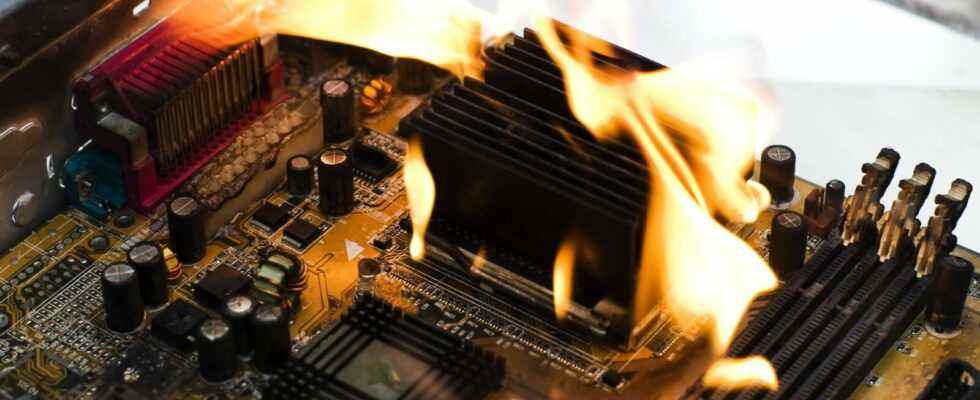Too much heat is not good for your PC, there is a risk of heat death – especially in summer. But with these tips, even midsummer won’t bother your PC anymore.
Especially in midsummer you should keep an eye on the temperatures of your PC. (Source: constantin32/depositphotos.com)
When temperatures rise in the weather app, it’s not just humans and animals that sweat. High temperatures are also a problem for our electronic devices. This only gets worse when the air is still in the office or at home and there is no breeze.
Air conditioning would be just right for an apartment. And there are also technical means for the PC that protect your computer from overheating. In this guide we show you what helps against heat build-up in the housing.
Fan – Well ventilated is half the battle Additional fans make life easier for your PC.
The most common cooling method for PC cases has always been the case fan. If you want to ensure better temperatures quickly and easily, you should improve here first. But before you simply install new fans, you must first get an overview.
Complete PCs or cases are often only sold with a fan on the back. Theoretically, a fan with low heat generation is also completely sufficient to transport the heat from the inside to the outside. The air is automatically drawn in through the front by the slight negative pressure generated by the case fan on the rear. This creates a cooling air flow.
Improve airflow – simple solution with great effect
The best way to improve this effect is to install additional fans in the front, which actively suck the air inside. Mounting locations are provided for this in almost all current housing models.
As a rule of thumb, the amount of air drawn in equals the amount of air blown out to create efficient airflow. The easiest way to achieve this is with fans of the same performance or a well-adjusted fan controller. In this way, the waste heat emitted by high-performance components such as the graphics card or processor is transported directly out of the case.
Case pressure – temperature management for professionals
Alternatively, other fan constellations also have advantages that you can consider. A slight overpressure in the case ensures more passive waste heat from all cracks and crevices of the case. A slight negative pressure ensures less turbulence in the air flow. However, both methods can have significant disadvantages for fans on other components, so we would advise against experiments.
The positioning of the fans is much more important. If your case allows it, you should make sure that you suck in cold air from the front and bottom and blow warm air out at the top or back. In this way, you can also make optimal use of the chimney effect.
Common mistakes when it comes to airflow
Perhaps the most important tip is to make sure that your mainboard also has the appropriate connections. If you buy multiple fans, it would be annoying if your PC didn’t have enough ports for them. A so-called splitter provides a remedy here.
You should also always clarify whether your device fans are interfering with the air flow. A common mistake is a fan that transports air against the current or the graphics card. Then you should turn the fan so that it blows backwards or upwards into the case. This can have a major impact on the temperature throughout the case.
Don’t miss anything with the NETWORK-Newsletter
Every Friday: The most informative and entertaining summary from the world of technology!
